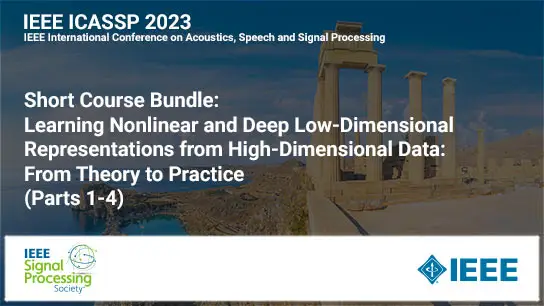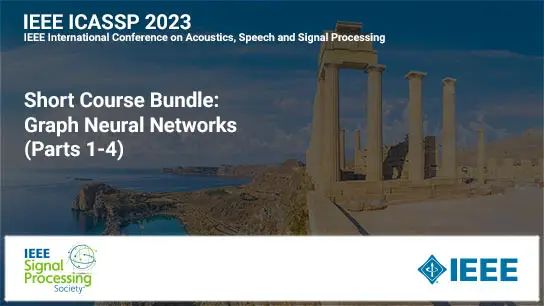Short Course Bundle: ICIP 2023 COURSE 2: Short Course: Unboxing Advancements in Biomedical Image Processing (Parts 1-4)
Sonali Agarwal; Sanjay Kumar Sonbhadra; Narinder Singh Punn
-
Members: $65.00SPS
IEEE Members: $85.00
Non-members: $100.00
About this Bundle
Short Course Bundle: ICIP 2023 COURSE 2: Short Course: Unboxing Advancements in Biomedical Image Processing (Parts 1-4)
With the rapid development of Artificial Intelligence (AI), biomedical image processing witnessed remarkable progress in terms of disease diagnosis concerning segmentation and classification tasks and has now become an active area of research in both the medical domain and academia. With various applications of deep learning, the implication of classification can determine whether a disease is present or not in various imaging modalities, such as the ground glass opacification (GGO) in the lungs present on CT scans. Additionally, localization allows for the identification of normal anatomy, such as the identifying lungs in a CT scan. Furthermore, segmentation can produce more precise borders around the target regions such as GGOs in CT. In medical imaging, most of the applications require critical examination of the target region that follows manual delineation by experts for getting an insight into the underlying biological process and developing further diagnosis or treatment plans. This course in its primary sections delivers awareness of such methods that could be utilized across various disease diagnosis tasks such as brain tumor region segmentation and classification, cancer detection, etc. Deep learning models are data hungry whereas the expense of data acquisition and delineation, and data security, results in the limited availability of biomedical data. In par to the transfer learning and data augmentation strategies, self-supervised learning is an emerging technology that aims to efficiently address this challenge. This learning scheme advances the potential of deep learning models to better capture feature representations and generate promising results. Although, AI has seemingly limitless potential for gaining new insights from medical images, but inefficient in presence of multimodal data. The existing AI solutions suffer significant challenges in presence of limited and restricted multimodal images in order to implement clinical settings and decision-making. Furthermore, this course talks about the present challenging area where the availability of multimodal images enforces learning and diagnosing the diseases in such a heterogeneous environment. Despite the promising results, most of the existing AI enabled solutions (such as Deep Learning Models) are hard to interpret and lack transparency; hence, are termed as black-box models. Therefore, to express the interpretability of the models, this course also introduces the visual explanation with class activation and uncertainty maps to establish rationale in the models while generating the predictions. Most AI methods have some internal and external disadvantages that prevent their eventual clinical implementation. As a result, this course also examines the current state of these approaches through the lens of strengths, weaknesses, opportunities, and threats (SWOT analysis).
04 Feb 2025






